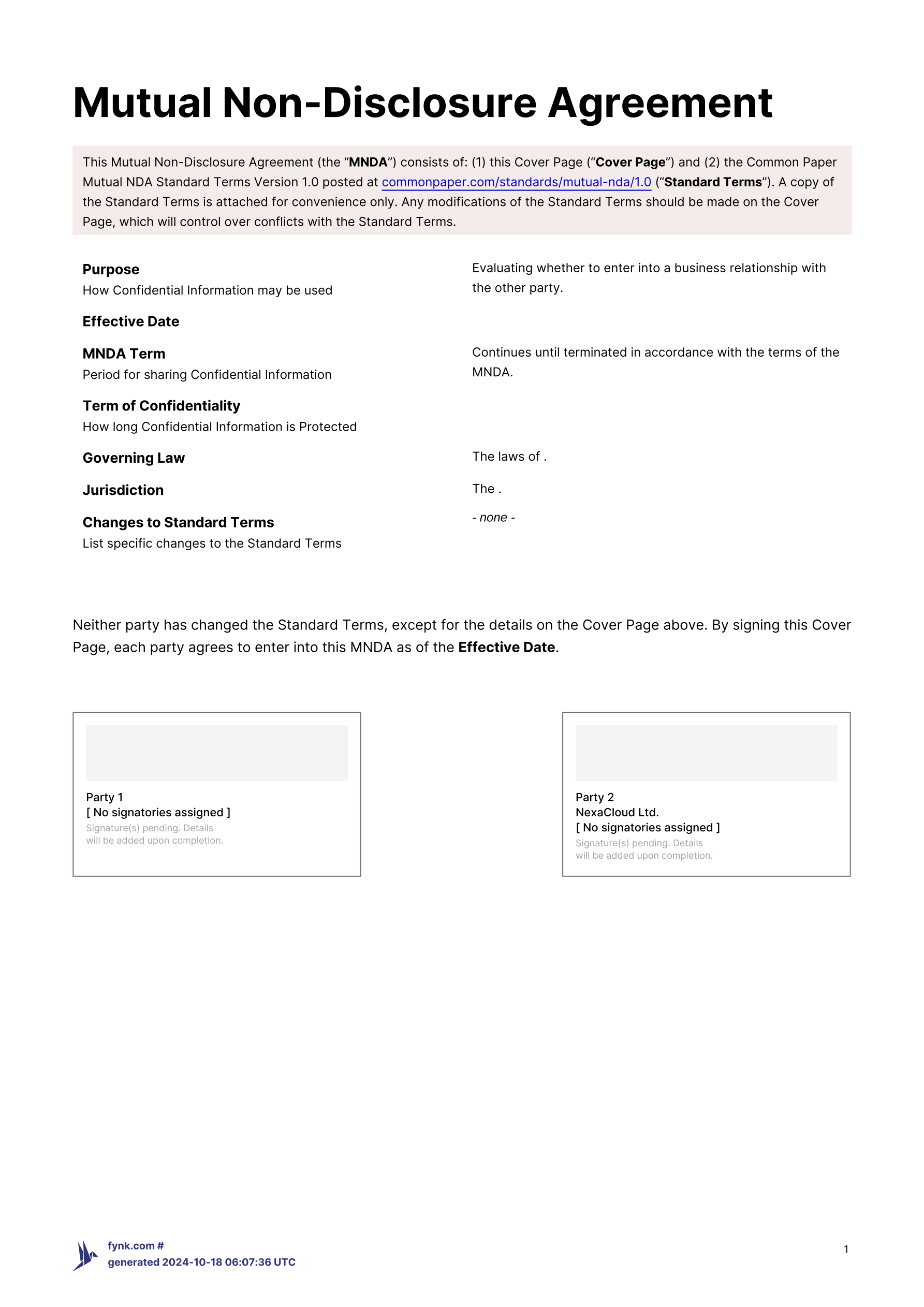Contract Playbooks - Secret to Efficiency in Contract Review
It’s easy to lose it when you are dealing with complex contracts, especially if you’re a non-legal professional. Shuffling through clauses, legal jargon, and pressure to get things right can make the process feel overwhelming. That’s the reason why contract review is such a demanding process. But there’s a better—and smarter—way to do it and that’s contract playbooks. In this blog post, you’ll learn everything you need to know about legal playbooks and how they can increase your efficiency by 99.53% when integrated with AI. So, let’s start!
- What Are Contract Playbooks Exactly?
- When You Should Use a Contract Playbook?
- What Will You Find in a Contract Playbook?
- What’s Good About Contract Playbooks?
- Who Uses the Contract Playbooks?
- What is an AI Contract Playbook?
- How to Create an AI-powered Contract Playbook?
- Pro Tips for Using Playbooks Effectively
- Now, Over to You

What Are Contract Playbooks Exactly?
A contract playbook—sometimes called a legal playbook—is a reference manual containing guidelines on reviewing a contract for legal teams and business professionals. It’s a source of truth for the whole company since it contains clear structures for reviewing contracts. As you can imagine, having a contract playbook can drastically increase everyone’s efficiency. The contract playbooks are especially useful for non-legal departments since they contain a clear structure on how to deal with different scenarios and issues that may arise when dealing with different types of contracts.
For example, imagine your sales team is dealing with a contract in which the counterparty requests something new—say, an extended payment term that does not exist in similar cases. Without a playbook to aid in contract monitoring and risk management, the sales team may need to pause negotiations, consult legal teams, or even escalate to senior management, delaying the process and increasing effort. With a good contract playbook in place, the sales team can easily find the solution and find out what would be the company’s standpoint when a similar situation arises.
And that’s just one of the simple use cases of contract playbooks. Playbooks are particularly valuable in high-volume contracting environments, such as procurement, sales, or vendor agreements, where repetitive negotiations can consume significant time and resources. Naturally, you need to have one dedicated playbook for each contract type you’re dealing with. Generally speaking, each contract playbook contains:
- Clauses that must be included in a certain contract.
- Preferred language and wording used in contracts.
- Predefined responses to the most common scenarios.
- Different fallback positions.
And many more!
To see how a contract playbook is structured, download our free NDA playbook template. It provides a practical example of how predefined guidelines can streamline contract review.
Get a Free NDA Playbook Template for Easier Contract Reviews
Why start from scratch? Grab our NDA playbook template and take the first step toward more efficient contract management.
We will collect, use and protect your data in accordance with our privacy policy.
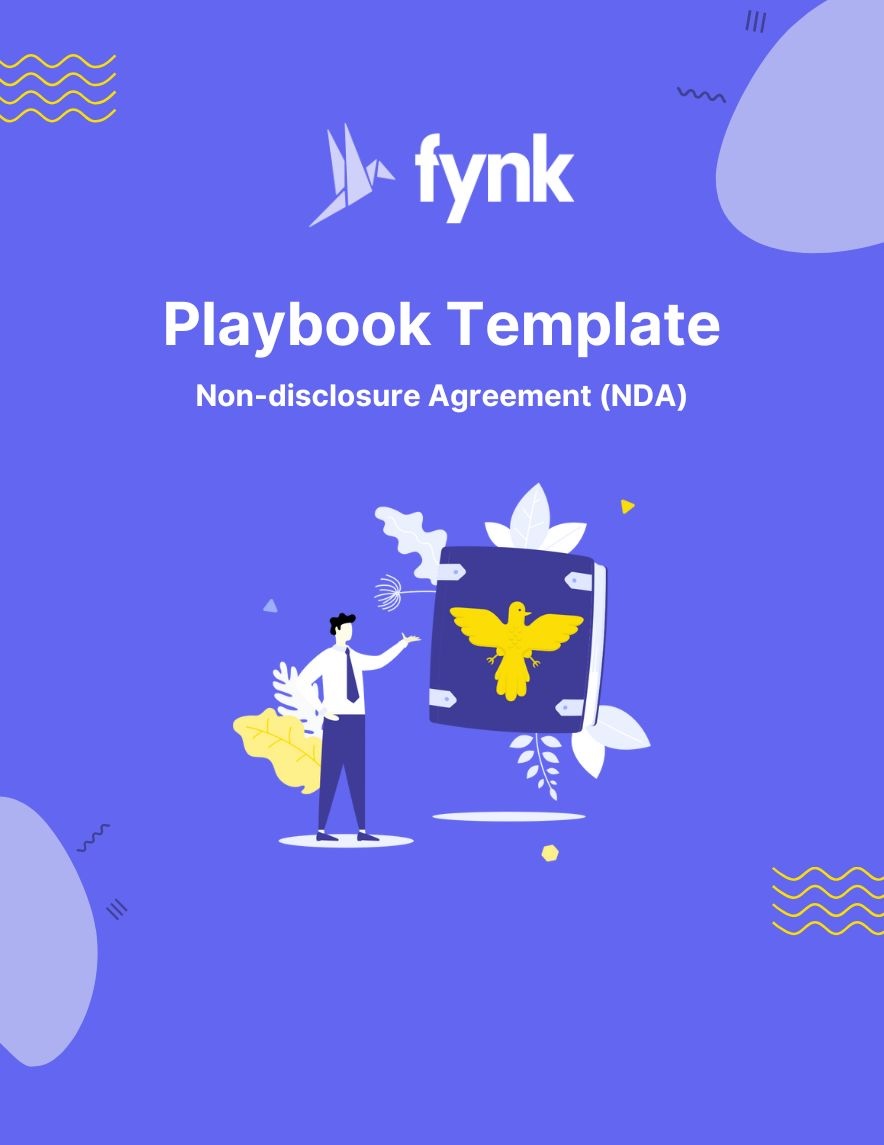
Let’s take a closer look at what’s included in a legal playbook.
When You Should Use a Contract Playbook?
A contract playbook is great to use when you want to make reviewing contracts faster, easier, and more consistent. Use it for agreements like NDAs, vendor contracts, or employment deals to ensure they follow your company’s rules and reduce risks. It’s especially helpful if you’re dealing with a lot of contracts or need multiple people to review and approve them. A playbook keeps everything clear, organized, and running smoothly.
In general, use a contract playbook when dealing with:
- High Volume of Contracts
- Complex or Risky Agreements
- Multiple Stakeholders Involved
What Will You Find in a Contract Playbook?
Regardless of what type of contract you’re dealing with, a typical contract playbook has 5 main sections:
1. Negotiation positions and strategies
Your contract playbook should contain instructions and remedies for different circumstances that may happen during the negotiation period. At this stage, you’ll find yourself—overall or for a specific clause—in one of the following three possible positions:
- Preferred position 🏆: The most ideal position in negotiation. When the counterparty agrees to your terms and conditions completely, as you’ve suggested.
- Fall-back position 🤝: The counterparty requests to modify a specific detail in the draft that affects your business, but you’re still willing to accept the changes and compromise to keep the deal. When Plan A is not working, your Plan B, C, and so on must be meticulously crafted so that you still protect your business interests while keeping the agreement.
- Walk-away position 🚫: The dead-end for the negotiation. You cannot accept the counterparty’s suggestions and reach an agreement under any circumstances.
A well-written legal playbook clearly defines the preferred position, prioritizes the fall-back scenarios, and specifies the situation for each legal clause when reaching an agreement is not possible.
For instance, if the counterparty does not agree to a strict indemnity clause with full liability coverage, the fall-back might state: “Each party shall be responsible for its own acts and omissions, and indemnify the other only for gross negligence or willful misconduct.” This ensures some risk coverage while softening the original stance.
❗ Important: For all positions—especially the fall-back—, not only is it important to define alternative plans, but also to carefully consider how the clauses are worded. Legalese is tricky and complicated on its own, that’s why it’s important that a legal professional carefully craft and check all the clauses in a legal playbook.
2. Alternative phrasing options
Legalese is tricky and complicated on its own, nuanced language, and slight changes in wording can significantly impact legal interpretations. That’s why it’s important that a legal professional carefully craft and check the important clauses of a legal playbook and also provide alternatives as well. Different versions may also be required based on specific circumstances or jurisdictions. For example, instead of a strict “Time is of the essence” clause, the playbook might include an alternative: “The parties agree to use commercially reasonable efforts to meet the agreed timelines.” This more flexible phrasing may be suitable for contracts where rigid deadlines are impractical.
3. Explanations of legal implications
Since many departments and teams use the playbook as a reference, it’s always a good idea to provide a clear explanation of the legal implications behind each clause. This helps non-legal professionals to work with contracts in hand more confidently and easily.
For instance, next to a limitation of liability clause, the playbook might explain: “This clause caps the financial exposure for the parties. Removing it could lead to unlimited liability, potentially resulting in significant financial losses.”
4. Red flag issues to avoid
Based on the company’s policy, some concepts may raise significant concerns when included in legal documents. These are usually called the “red flags” and every contract playbook must include them. These may include overly broad indemnities, ambiguous terms, provisions that contravene regulations, or clauses that increase the risk of breach of contract.
For example, the playbook might warn against clauses like: “The provider guarantees uptime 100% of the time under all circumstances.” This would be flagged as unrealistic and potentially set the organization up for liability due to factors outside its control, like natural disasters or cyberattacks.
5. Approval workflows
One of the best things about having a contract playbook is that it not only helps you draft and negotiate effectively but also simplifies legal automation by clearly outlining the approval process. Legal playbooks often include decision trees or flowcharts that can be integrated with automated tools for seamless execution.
For example, in the general approval flowchart, after-sales executives work on a contract, they need to approve the draft first by the sales manager and then by the CFO. The playbook can also specify the policies to execute the approval. For example, does the draft need to be approved by all individuals in that position, or would approval from one suffice?
In terms of specific conditions, a playbook may mention for example “Does the agreement exceed $100,000? If yes, escalate to the CFO. If no, proceed with manager approval”.
What’s Good About Contract Playbooks?
Contract playbooks are more than simple guidelines for drafting and negotiating contracts. They can be super helpful, especially when they help to:
Save Time for Everyone
Perhaps the most tangible benefit of placing a contract playbook in the company’s workflow is freeing up time both for legal and other departments. Unfortunately, dealing with contracts is not the easiest or most straightforward process for companies. That’s why, on average, it takes 3.4 weeks to approve a single contract and surprisingly, most of the tasks related to this process are repetitive and can be optimized.
Using a legal playbook helps everything move smoothly and more efficiently from start to end. The legal team can cover common scenarios in the playbooks and create a great resource for the rest of the company.
Reduce the legal and compliance risks
Apart from speeding up the whole process, the other great thing about playbooks is that they prevent hefty penalties or any legal issues by providing pre-vetted clauses, clear guidelines, and standardized language that aligns with the regulatory requirements of your organization. The risk can be even further reduced when integrating smart approval processes like using AI Review Playbooks, which also reduces human errors.
Standardize the language across contracts
Another great benefit of having a contract playbook is that it standardizes the language across all your contracts. This means consistency in how terms, conditions, and obligations are expressed. By using a playbook, you’re not starting from scratch with every new agreement. Instead, you’re leveraging pre-approved language that aligns with your organization’s goals. Moreover, it empowers your team to focus on substantive negotiations rather than debating the wording, allowing you to close deals faster without compromising on quality.
Who Uses the Contract Playbooks?
Everybody who deals with contracts can use a playbook, especially
- Legal Teams: To ensure compliance, manage risks, and streamline contract review processes.
- Procurement Teams: For negotiating supplier agreements with consistent terms and conditions.
- Sales Teams: To expedite customer contract negotiations and close deals faster.
- Operations Teams: This is for maintaining consistency and efficiency in service agreements.
- Executives and Decision-Makers: To align contracts with business goals and strategic priorities.
What is an AI Contract Playbook?
An AI Contract Playbook is designed to save you even more time, reduce stress, and ensure your agreements are legit and compliant with your standards. It’s a set of carefully crafted instructions (prompts) that help an AI to analyze your contracts and flag anything that doesn’t quite sit right.
Here’s how it works: using clear prompts, you tell the AI what to look for exactly or what needs to be checked in a contract. For example, it could be:
- Does the NDA specify a confidentiality period of at least 3 years or until trade secrets are no longer legally protected?
- Is the Governing Law specified as ‘California’ or another jurisdiction aligned with company policy?
Once your rules are in place, the AI goes to work, checking every nook and cranny of your contract. If it finds something missing or fishy—like, say, the confidentiality term isn’t long enough—it raises a red. These flags make it easy for you to zero in on potential issues and fix them before they become headaches.
An AI Legal Playbook is even better than traditional ones because:
- It Saves Time: AI tools can perform contract reviews in just 26 seconds—a staggering 99.53% faster than the average 92 minutes it takes humans. This way, not only do they save precious time, but also save energy and effort. You can quickly identify issues without spending hours manually analyzing every clause, freeing you to focus on strategic tasks.
- It Ensures Consistency and Compliance: Unlike manual reviews that can vary, AI playbooks apply your policies the same way every time. They flag risks, missing clauses, or inconsistencies, helping to ensure your contracts meet compliance standards reliably and without errors.
- It Streamlines Collaboration and Approvals: With built-in workflows, AI playbooks make it easy to involve the right people at the right time. Teams know their roles and responsibilities, eliminating confusion and keeping the approval process efficient and transparent.
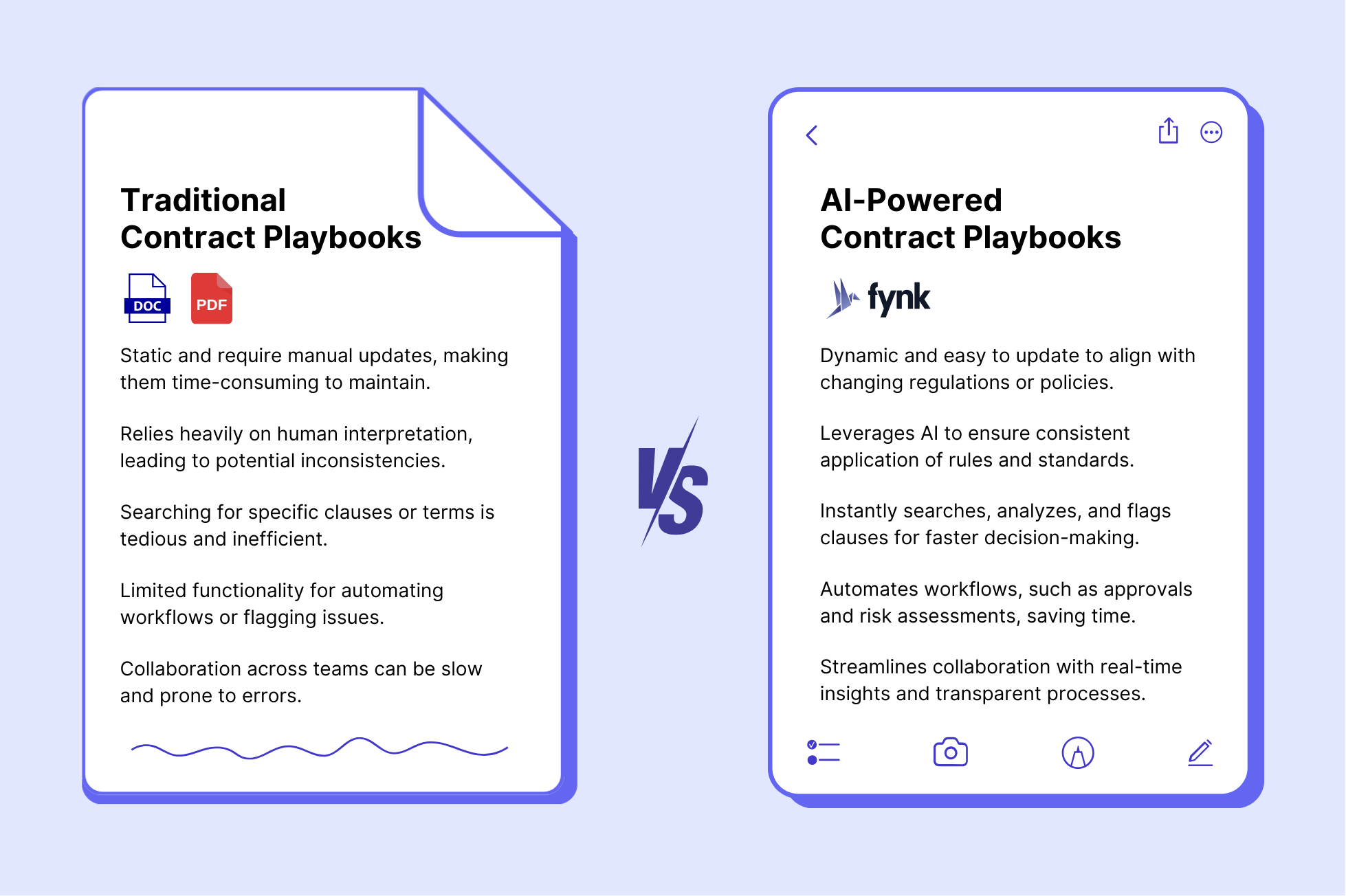


Traditional contract playbooks vs. AI contract playbooks.
How to Create an AI-powered Contract Playbook?
You can create an AI-powered legal playbook using a digital contract management tool like fynk. The platform lets you set various conditions to make the most of the power of AI to review your documents in a matter of seconds.
Ideally, you’ll need one playbook for each contract template that you have. Let’s say you’re frequently using Non-disclosure Agreement (NDA) templates and planning to create a playbook for them using the fynk platform. Here’s how you can proceed:
Step 1. Identify key contract elements
Start by listing the essential clauses you want the playbook to analyze. For example, when writing an NDA, the vital clauses to include would be confidentiality terms, governing law, termination conditions, return or destruction of confidential information, and specific use cases for the agreement.
Step 2: Define the prompts
For each section or important clause of your template, you can define the rules so that AI knows exactly what to check and where to find it. Here are some examples:
- Prompt for checking the governing law: “Does the NDA specify that the Governing Law is California?”
- Prompt for confirmation of terms: “Does the NDA confirm that no changes have been made to the Standard Terms?”
- Prompt for ensuring the protection of confidential information: “Does the NDA require the Receiving Party to protect Confidential Information using at least the same protections it uses for its own similar information but no less than a reasonable standard of care?”
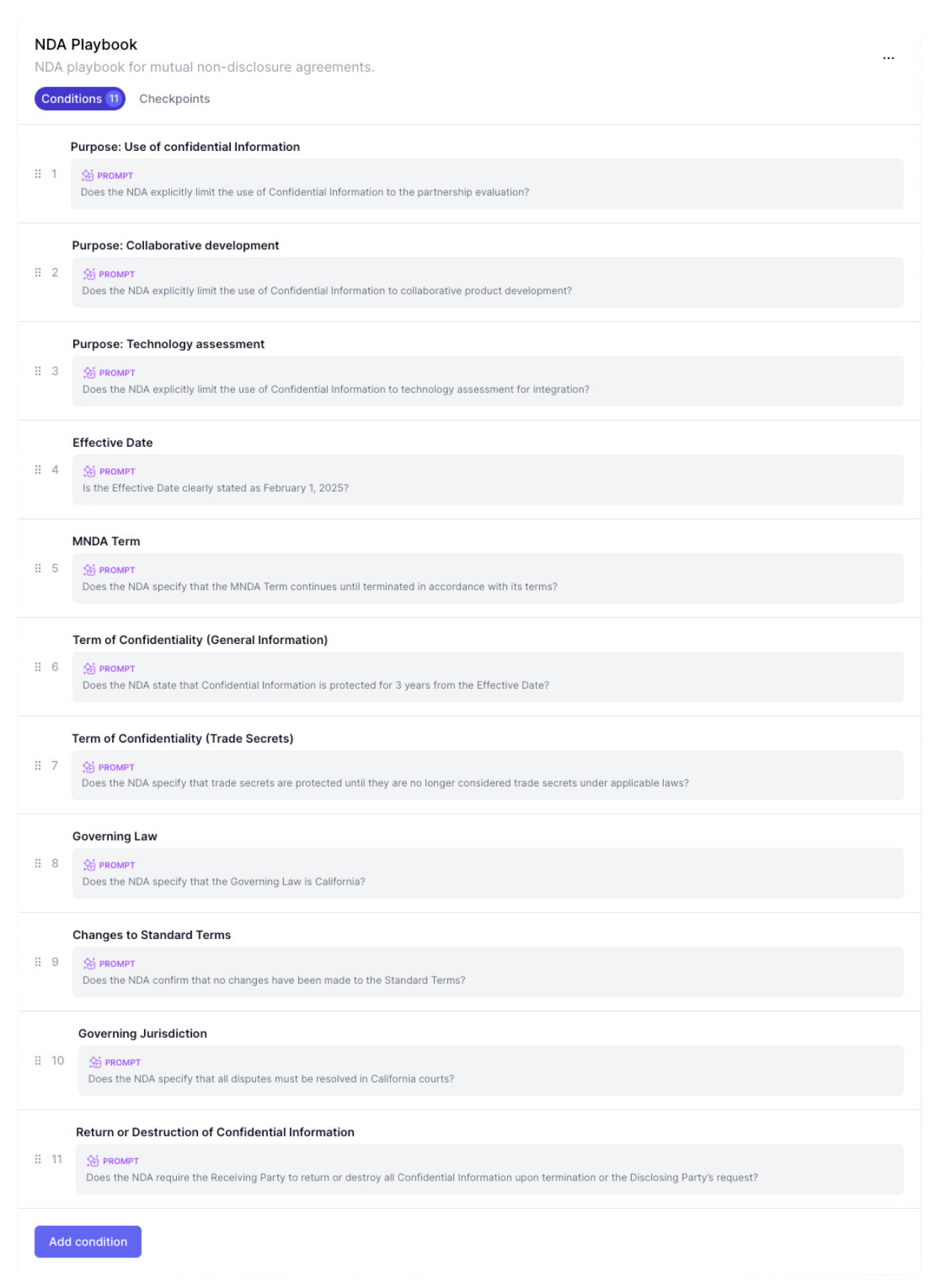


Example of NDA contract playbook using AI.
✨ Pro Tip: You can also ask AI to check whether a specific language is used in the whole or a specific section of the document. For example, “Does the NDA explicitly use the phrase ‘trade secrets’ in the Term of Confidentiality section?”
Searching for a contract management solution?
Find out how fynk can help you close deals faster and simplify your eSigning process – request a demo to see it in action.
Step 3: Assign flags for your rules
You can assign each rule a red or an orange flag, depending on how important each rule is.
🔴 Red flag: Used when a condition is so important that if it’s not met, you can’t proceed with the contract. For example, you set a rule that the jurisdiction in all NDAs must be ‘California.’ If any other jurisdiction is mentioned in the NDA text, AI will show you a red flag.
🟠 Orange flag: Used when a condition needs attention but isn’t a dealbreaker. For example, you set a rule that the confidentiality term in an NDA should last at least three years. If the term is slightly shorter—say two years—AI will show you an orange flag to warn you that this may require review or negotiation.
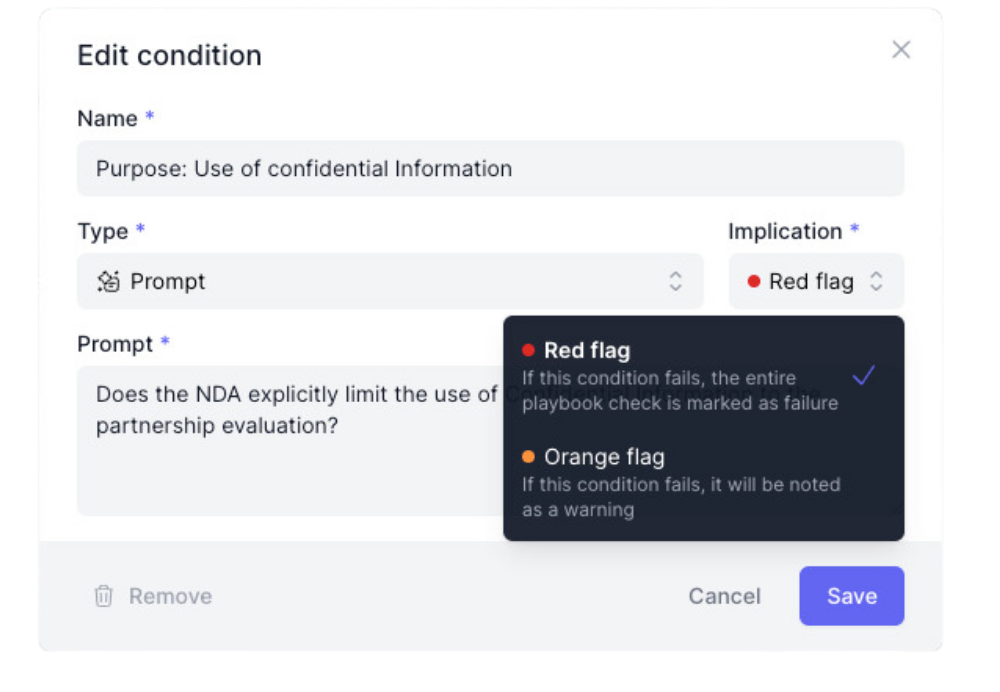


Step 5: Run your playbook
Now that your playbook template is ready, you can run it on your NDA contract to ensure your conditions are all met and solve any flags that you may encounter. You can easily modify or update the playbook as necessary to align it with your compliance standards.
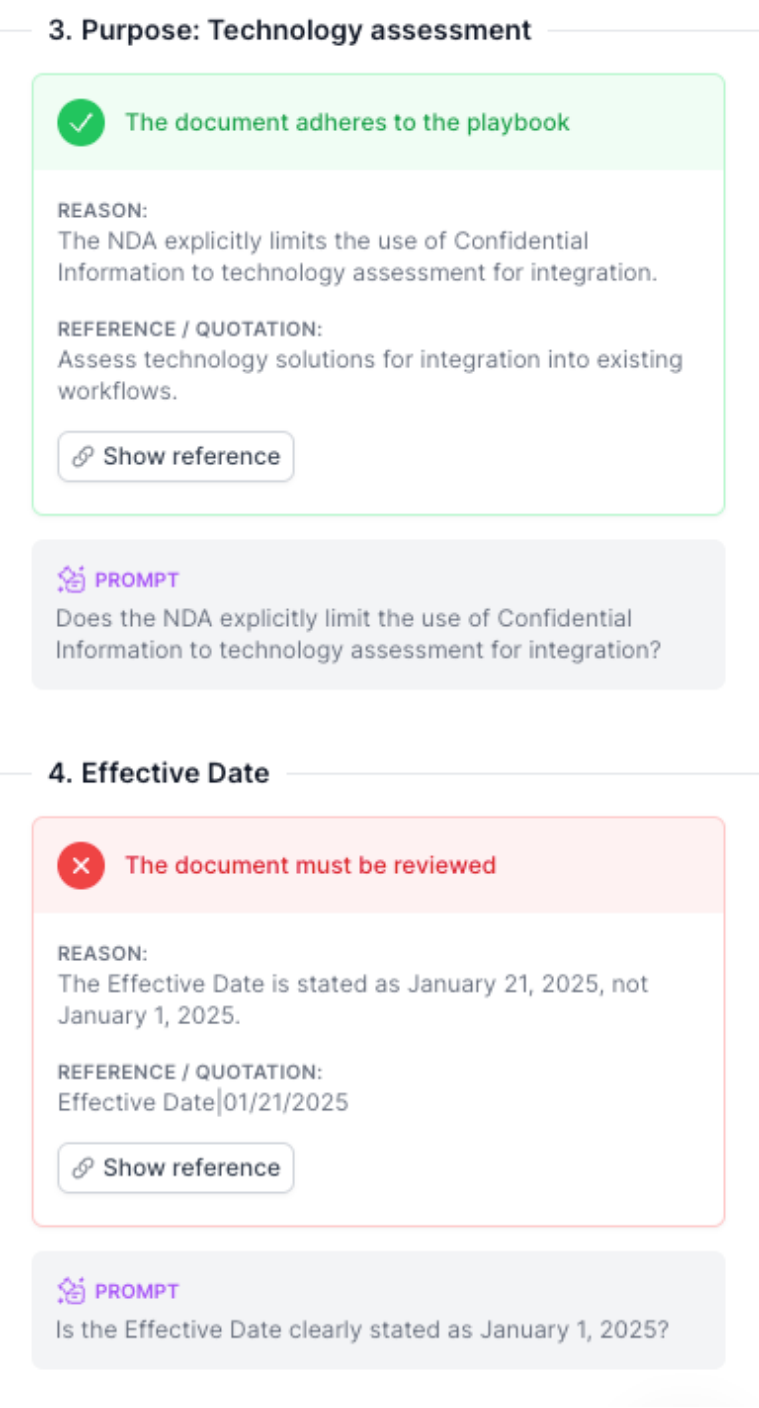


Examples of contract playbook in fynk.
Pro Tips for Using Playbooks Effectively
Start Small, Then Scale
Begin with a playbook focusing on high-priority, frequently used contracts, like NDAs, LOIs, or influencer contracts. Once you’re comfortable with the process, expand to cover more complex clauses and multiple contract types.
Customize for Your Business Needs
Tailor your playbook to reflect your organization’s policies and risk tolerance. For example, if your company operates in multiple jurisdictions, include rules for region-specific clauses like governing law and tax compliance.
Regularly Review and Update
Laws and business priorities change, and so should your playbook. Schedule periodic reviews to ensure it stays aligned with current legal requirements, internal policies, and industry trends.
Test with Real Contracts
Before fully deploying a playbook, run a variety of real contracts through it. This will help you identify gaps or overly strict rules that may need fine-tuning to handle diverse scenarios effectively.
Leverage technology
Use AI-powered contract management tools life fynk to implement and automate your playbook. These tools can quickly analyze documents, flag issues, and streamline workflows, saving you time and reducing human error.
Now, Over to You
At the end of the day, contract playbooks aren’t just about saving time or keeping things organized (though they do that really well!). They’re about giving you peace of mind. With a solid playbook, you can handle contracts with less stress, fewer delays, and more confidence—whether you’re dealing with a one-off deal or a mountain of agreements. So, if you’re ready to work smarter, not harder, a contract playbook might just be the best investment your team makes this year.
Please keep in mind that none of the content on our blog should be considered legal advice. We understand the complexities and nuances of legal matters, and as much as we strive to ensure our information is accurate and useful, it cannot replace the personalized advice of a qualified legal professional.

Table of contents
- What Are Contract Playbooks Exactly?
- When You Should Use a Contract Playbook?
- What Will You Find in a Contract Playbook?
- What’s Good About Contract Playbooks?
- Who Uses the Contract Playbooks?
- What is an AI Contract Playbook?
- How to Create an AI-powered Contract Playbook?
- Pro Tips for Using Playbooks Effectively
- Now, Over to You
Want product news and updates? Sign up for our newsletter.
Other posts in Contract-Management

SaaS contract management explained for buyers and vendors
If you work in SaaS, you know how quickly contracts can pile up. Each one comes with its own terms, renewals, …
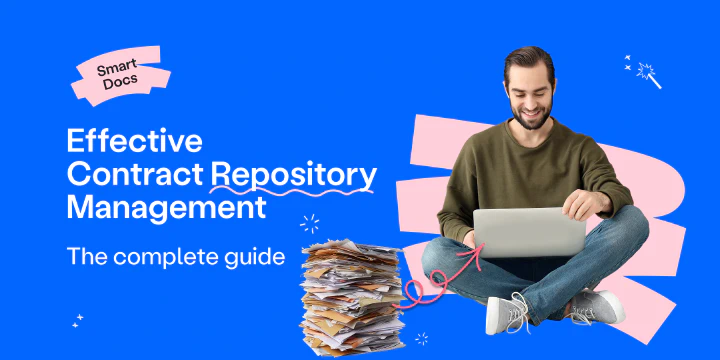
The Complete Guide to Effective Contract Repository Management
A contract repository is where every agreement your business depends on finally finds its place. No cluttered …
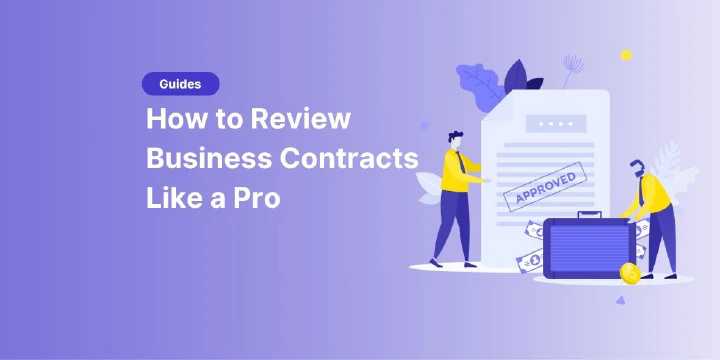
How to Review Business Contracts Like a Pro in 2025
When it comes to business contracts, what you don’t catch can hurt you. That’s why reviewing a business …
Contracts can be enjoyable. Get started with fynk today.
Companies using fynk's contract management software get work done faster than ever before. Ready to give valuable time back to your team?
Schedule demo
